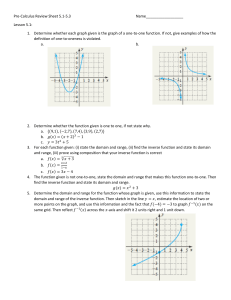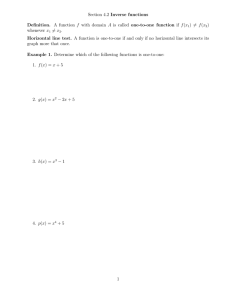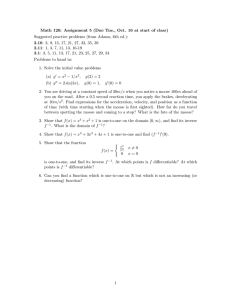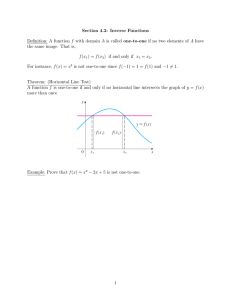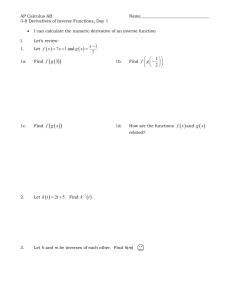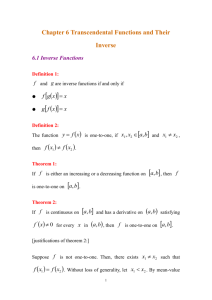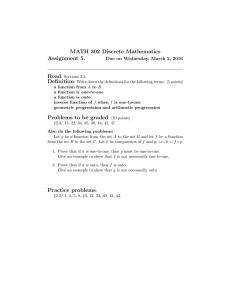Page 1 Section 4.2: Inverse Functions
advertisement
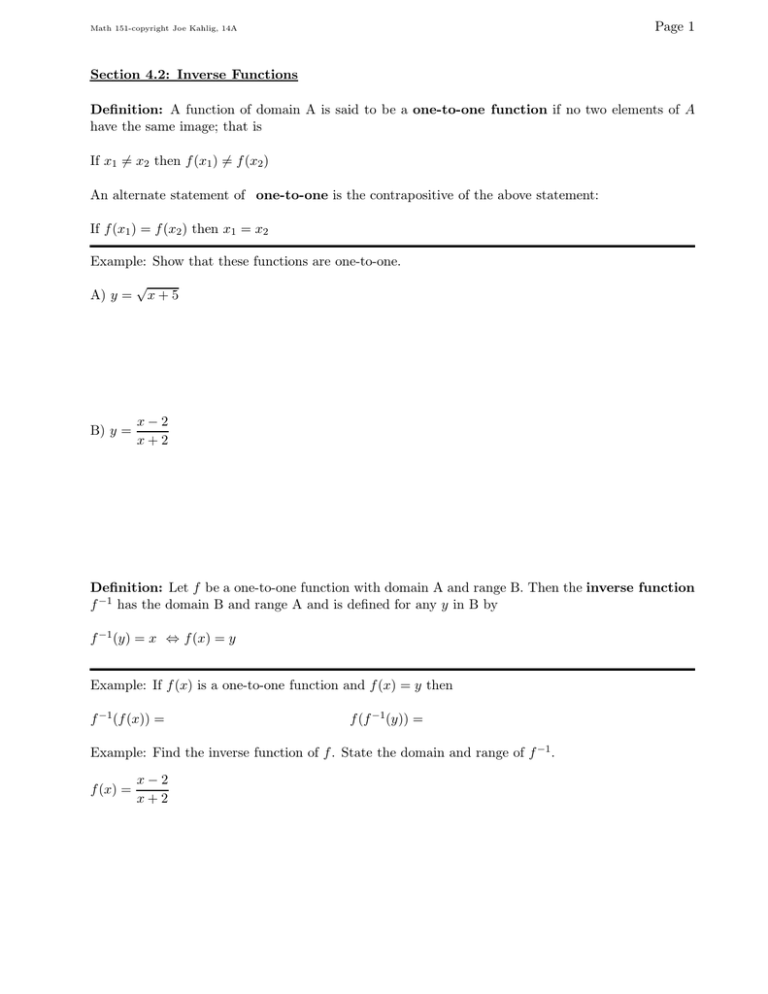
Page 1 Math 151-copyright Joe Kahlig, 14A Section 4.2: Inverse Functions Definition: A function of domain A is said to be a one-to-one function if no two elements of A have the same image; that is If x1 6= x2 then f (x1 ) 6= f (x2 ) An alternate statement of one-to-one is the contrapositive of the above statement: If f (x1 ) = f (x2 ) then x1 = x2 Example: Show that these functions are one-to-one. A) y = √ B) y = x−2 x+2 x+5 Definition: Let f be a one-to-one function with domain A and range B. Then the inverse function f −1 has the domain B and range A and is defined for any y in B by f −1 (y) = x ⇔ f (x) = y Example: If f (x) is a one-to-one function and f (x) = y then f −1 (f (x)) = f (f −1 (y)) = Example: Find the inverse function of f . State the domain and range of f −1 . f (x) = x−2 x+2 Page 2 Math 151-copyright Joe Kahlig, 14A Example: Find the inverse function of f (x) = f (x) = √ √ x − 5. State the domain and range of f −1 . x−5 Theorem: If f is a one-to-one differentiable function with inverse function g = f −1 and f ′ (g(a)) 6= 0, then the inverse function is differentiable at a and g′ (a) = 1 f ′ (g(a)) Example: If g is the inverse function to f , compute g′ (0) and g ′ (−8) x−4 f (x) = x+5 Example: If g is the inverse function to f , compute g′ (6). f (x) = 5 + 2x + e3x

